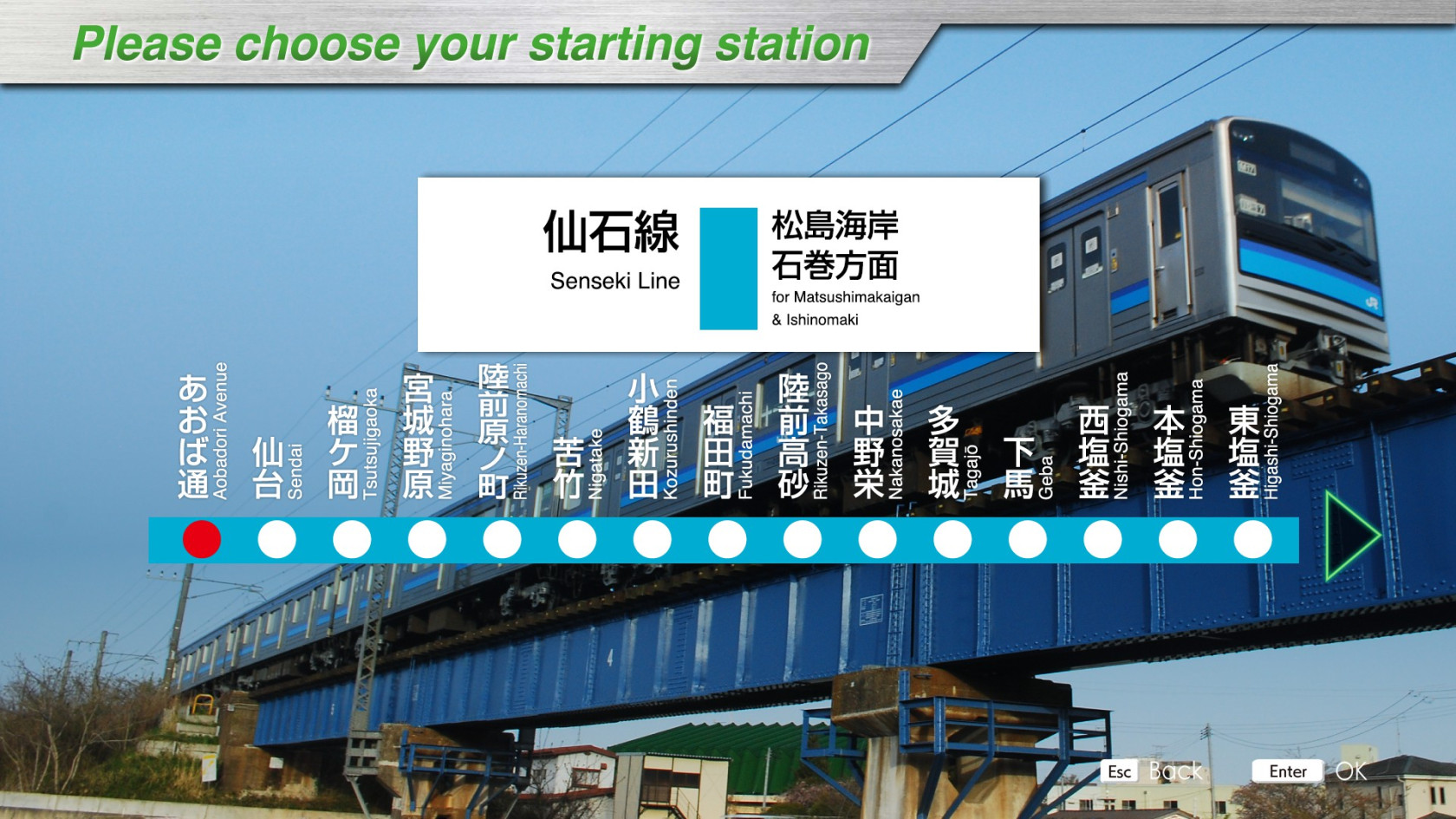Senseki Line
Introducing
The Senseki Line is a 49.0 km long line connecting Sendai City in the central part of Miyagi Prefecture and Ishinomaki City in the northeast, and is the only DC electrified line in the Tohoku region. Like the Saikyo Line, ATACS is used in some sections (Aobadori Station to Higashi-Shiogama Station). In the Great East Japan Earthquake of March 11, 2011, the Senseki Line, which runs along the coast, was severely damaged by the earthquake and tsunami, and the entire line was shut down.
The line between Rikuzen-Otsuka and Rikuzen-Ono stations, located in low-lying areas and particularly heavily damaged, was relocated to higher ground inland, and resumed full service on May 30, 2015, four years after the line was closed.
In conjunction with the restoration of all lines, a connecting line was established between Matsushimakaigan Station and Takagimachi Station to connect from the Tohoku Main Line, and the "Senseki Tohoku Line" began direct service.
The Senseki Tohoku Line operates between Takagimachi Station and Ishinomaki Station, and HB-E210 series diesel trains also operate on the line.
The first half of the line (from Aobadori Station to Hon-Shiogama Station) runs through a bedroom town of Sendai, the middle part (from Hon-Shiogama Station to Tona Station) runs along Matsushima Bay with Matsushima, one of the three most scenic spots in Japan, at its side, and the latter half (from Tona to Ishinomaki Station) runs through a rural landscape.
Key data
- Line length: 49.0 km
- Number of stations: 32
- Safety system: ATACS / ATS-Ps
- Train model: 205-3100 series (4 cars)
- Max speed: 95km/h
- Max speed after signals:
- Reduced speed (green/yellow): 65 km/h
- Caution (yellow): 45 km/h
- Speed restriction (yellow/yellow): 25 km/h
- Routes:
- Aobatori Av. ~ Ishinomaki (1221S): Local train - 32 stations - 49 km
- Aobatori Av. ~ Tagajo (763S): Local train - 11 stations - 12.6 km
- Aobatori Av. ~ Matsushima-Kaigan (781S): Local train - 17 stations - 23.2 km
- Automatic announcements: No
- Conductor announcements: Yes
- Driver announcement (pointing-and-calling): No (except for basic pack)
Features
The safety system is ATACS up to Higashi-Shiogama station. After that, it's ATS-Ps.
For the ATACS section, the Max Speed and Next Limit indicators are empty, and the light signals should be ignored.
As schedules are not available, it is advisable to use the timetables or display the STA indicator.
Stations list
| Station name |
Japanese name |
Distance from Aoba-dōri (km) | JRETS connections |
|---|---|---|---|
| Aoba-dōri | あおば通 | 0 | |
| Sendai | 仙台 | 0,5 | |
| Tsutsujigaoka | 榴ヶ岡 | 1,3 | |
| Miyaginohara | 宮城野原 | 2,4 | |
| Rikuzen-Haranomachi | 陸前原ノ町 | 3,2 | |
| Nigatake | 苦竹 | 4,0 | |
| Kozurushinden | 小鶴新田 | 5,6 | |
| Fukudamachi | 福田町 | 7,7 | |
| Rikuzen-Takasago | 陸前高砂 | 8,6 | |
| Nakanosakae | 中野栄 | 10,3 | |
| Tagajō | 多賀城 | 12,6 | |
| Geba | 下馬 | 14,4 | |
| Nishi-Shiogama | 西塩釜 | 15,2 | |
| Hon-Shiogama | 本塩釜 | 16,0 | |
| Higashi-Shiogama | 東塩釜 | 17,2 | |
| Rikuzen-Hamada | 陸前浜田 | 20,3 | |
| Matsushimakaigan | 松島海岸 | 23,2 | |
| Takagimachi | 高城町 | 25,5 | |
| Tetaru | 手樽 | 27,3 | |
| Rikuzen-Tomiyama | 陸前富山 | 28,6 | |
| Rikuzen-Ōtsuka | 陸前大塚 | 30,8 | |
| Tōna | 東名 | 32,2 | |
| Nobiru | 野蒜 | 33,4 | |
| Rikuzen-Ono | 陸前小野 | 36,0 | |
| Kazuma | 鹿妻 | 37,6 | |
| Yamoto | 矢本 | 40,2 | |
| Higashi-Yamoto | 東矢本 | 41,6 | |
| Rikuzen-Akai | 陸前赤井 | 43,1 | |
| Ishinomakiayumino | 石巻あゆみ野 | 45,2 | |
| Hebita | 蛇田 | 46,6 | |
| Rikuzen-Yamashita | 陸前山下 | 47,6 | |
| Ishinomaki | 石巻 | 49,0 |
Movie
Useful links
Wikipedia: https://en.wikipedia.org/wiki/Senseki_Line
Driver's guide and timetables: https://docs.google.com/spreadsheets/d/1Hw8xuEEJTZLLzR22RwQkC6sJLlXACJDhcS-kG6KpiwM/edit#gid=1919488277

